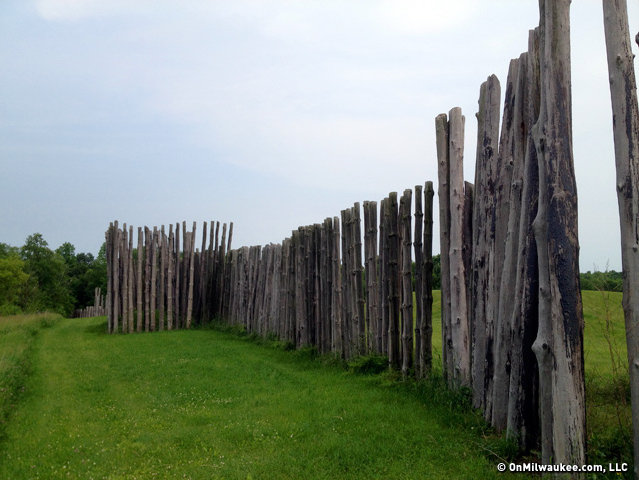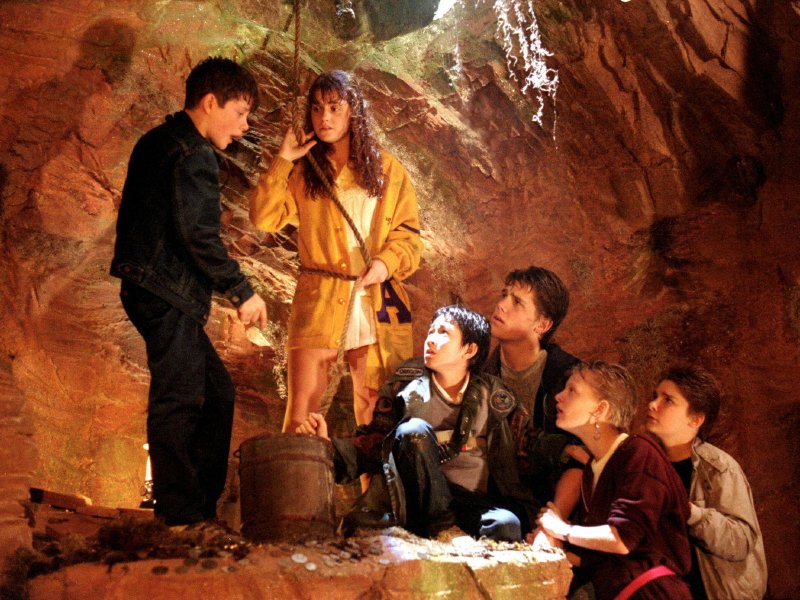Nobody knows who they were ... or what they were doing. Oh, wait, that's Stonehenge.
In fact, archaeologists know quite a bit about what life was like at the native settlement that is today called Aztalan. Located about an hour west of Milwaukee, on the edge of Lake Mills and Jefferson, Aztalan has been called the largest and most significant archeological site in Wisconsin.
Settled by a Mississippian people who likely arrived from the south, perhaps from Cahokia, located in Illinois, across Big Muddy from St. Louis, Aztalan was built on the west bank of the Crawfish River and was active from about 1100 to 1300.
The people at Aztalan were not native to the Wisconsin area and, according the State Park website, "established a hierarchical society that was culturally exotic for the area."
The ghost town and its mounds were discovered in 1835 by Timothy Johnson. It gained more notice when an article about the site was published in Milwaukee two years later by Nathaniel Hyer, who mapped the site and named it after the eponymous Mexican city, because he believed the builders were from there.
In 1838, unsuccessful attempts were made to prevent the land from being sold off as farmland, and lore has it that the U.S. government sold it for $22.
Although some of the site's mounds fell victim to plows, Increase Lapham spent a week at Aztalan in 1850, mapping it, investigating it and excavating it. At the time, some of the site was still intact.
It wasn't until early in the 20th century that scientific excavations of the site took place and in 1948 the DNR bought much of the site. Pieces owned by the Wisconsin Archeological Society and the Lake Mills-Aztalan Historical Society were donated and four years later Aztalan State Park was opened, as excavations continued.
In 1964, Aztalan became a National Landmark.
When you visit the site today, you will see some long sections of stockade fence, built from towering, barkless tree trunks, and also two stunning pyramidal ceremony mounds. It bears noting that these features are all rebuilt.
According to signage at the site, "When the mounds were excavated in 1919, they had been plowed for half a century and appeared much the same as the natural knoll. Modern reconstruction of two of the platform mounds at Aztalan involved a tremendous amount of soil, earthmoving equipment and many man hours of labor."
So, how did the Mississippian people do it nearly a millennium ago?
"Excavation of these mounds suggest that these massive earthworks were constructed in stages, perhaps many years apart."
There were three mounds and a natural knoll that served as corners of a giant plaza that was the center of Aztalan life. Scattered around the site, were houses of two types: one circular, the other rectangular.
There are no remnants of any of the daily life at Aztalan. There is a mowed path that encircles the former plaza and a short path to the rushing waters of the Crawfish River. If you park at the first parking lot, just inside the State Park entrance, you can see – and walk through – a series of conical mounds on the northern edge of the park.
A little further north of the park is the Aztalan Museum, which is its own entity, separate from the park. On the site is what remains of a once six-foot tall "Princess" burial mound, along with seven historic buildings, including two 19th century churches, an old school, a two-story granary loaded with farm implements and old tools and a number of cabins.
The brick church houses a plethora of arrowheads, pottery shards and other objects uncovered at Aztalan.
A visit to the museum allows you to step back in time to the early European settlement of the area. Complement it with a visit to the State Park, which sends you even further back to a time when a vibrant native city thrived here on the banks of the Crawfish River.
The museum and state park are about two miles south of I-94, exit at Lake Mills.
The museum is open, from mid-May through mid-October, Thursdays through Sundays. A Halloween harvest celebration takes place the third week of October. Admission is $5 for adults, and $3 for children and seniors. Children age 5 and under are free from Thursday-Sunday, noon until 4 p.m. Special sight seeing hours available with a phone call. The ticket cabin has a small selection of objects and books about Aztalan for sale.
The park is open year-round from 6 a.m. until 10 p.m. There are guided tours of the park at 2 p.m. on Sundays from May through September. A State Park sticker is required for cars entering the park. You can pay for an hour ($5), a day ($7) or get a season pass good at all Wisconsin State Parks ($25).
Born in Brooklyn, N.Y., where he lived until he was 17, Bobby received his BA-Mass Communications from UWM in 1989 and has lived in Walker's Point, Bay View, Enderis Park, South Milwaukee and on the East Side.
He has published three non-fiction books in Italy – including one about an event in Milwaukee history, which was published in the U.S. in autumn 2010. Four more books, all about Milwaukee, have been published by The History Press.
With his most recent band, The Yell Leaders, Bobby released four LPs and had a songs featured in episodes of TV's "Party of Five" and "Dawson's Creek," and films in Japan, South America and the U.S. The Yell Leaders were named the best unsigned band in their region by VH-1 as part of its Rock Across America 1998 Tour. Most recently, the band contributed tracks to a UK vinyl/CD tribute to the Redskins and collaborated on a track with Italian novelist Enrico Remmert.
He's produced three installments of the "OMCD" series of local music compilations for OnMilwaukee.com and in 2007 produced a CD of Italian music and poetry.
In 2005, he was awarded the City of Asti's (Italy) Journalism Prize for his work focusing on that area. He has also won awards from the Milwaukee Press Club.
He has be heard on 88Nine Radio Milwaukee talking about his "Urban Spelunking" series of stories, in that station's most popular podcast.







